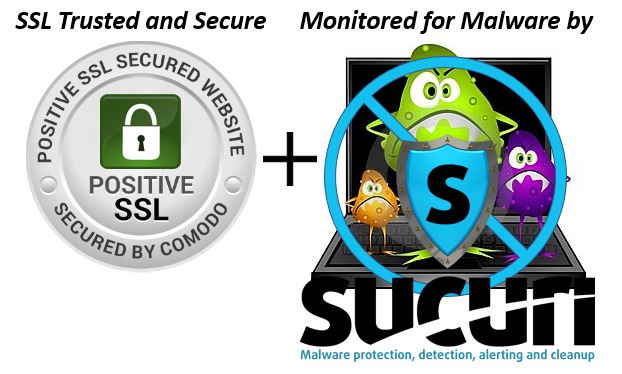Every day there are certain “tech” sites I visit for news and information to help me keep up with what’s going on in the Technology World.
To give you an easy way to see the latest happenings, here are the top 5 articles (for today) from four of my favorite sites.
Scroll down to see news from TechSpot, CNet, PC World, and Make-Use-Of.
Clicking the article title will open a new browser tab and take you to the full article.
News from TechSpot
- Nvidia RTX 5060 reportedly launching on May 19, one day after AMD's Radeon RX 9060 XTon April 25, 2025 at 10:04 pm
Nvidia told board partners it will launch the RTX 5060 on May 19, anonymous sources told VideoCardz. Reviews will go live the same day, likely giving customers little time to weigh third-party benchmarks before buying what may become the most popular card in the Blackwell lineup.Read Entire Article
- Microsoft relaunches Recall on Copilot+ Windows PCs after privacy overhaulon April 25, 2025 at 8:13 pm
Microsoft has officially launched its controversial Recall feature, but only for users of new Copilot+ PCs. The AI-powered tool, which captures screenshots every few seconds to build a searchable timeline of on-screen activity, returns nearly a year after Microsoft postponed it following a wave of privacy backlash. This time, the...Read Entire Article
- Adobe Firefly now supports partner AI models, moodboards, and enterprise APIson April 25, 2025 at 7:39 pm
As with most applications being enhanced with GenAI, the creative world of AI-powered image and video creation continues to evolve at a tremendously rapid pace. It's no surprise then to see Adobe unveil a new version of its Firefly image generation models at the recent Adobe MAX event in London....Read Entire Article
- UK bans gaming controller exports to Russia to hinder military useon April 25, 2025 at 6:37 pm
While the Pentagon now uses custom-built controllers to operate its systems, Russia continues to rely on off-the-shelf video game controllers manufactured in the West. Authorities in the UK aim to block exports of these devices after reports revealed that Russian forces have repurposed them to control drones in Ukraine air...Read Entire Article
- Netflix introduces cleaner subtitles focused only on spoken dialogueon April 25, 2025 at 5:50 pm
The new option, which will first appear on new titles coming to Netflix such as season five of You, shows only spoken dialogue – no audio cues or speaker names. Supported titles will feature two subtitle options in English: English (CC), which is the original format with all the extras,...Read Entire Article
News from CNet
- Today's NYT Mini Crossword Answers for Saturday, April 26by Gael Cooper on April 26, 2025 at 4:29 am
Here are the answers for The New York Times Mini Crossword for April 26.
- Watch FA Cup Soccer: Livestream Crystal Palace vs. Aston Villa From Anywhereby Kevin Lynch on April 26, 2025 at 12:10 am
A place in the final is up for grabs as the Eagles take on Unai Emery's men at Wembley.
- Premier League Soccer: Stream Chelsea vs. Everton From Anywhereby Kevin Lynch on April 26, 2025 at 12:00 am
Enzo Maresca's men look to boost their Champions League qualification hopes with a win at Stamford Bridge.
- Best Internet Providers in New Hampshireby David Anders on April 25, 2025 at 10:30 pm
Find the fastest plans and cheapest home internet in the Granite State with help from our CNET broadband experts.
- Best Internet Providers in the Bronx, New Yorkby Joe Supan on April 25, 2025 at 9:32 pm
Whether you're looking for speed or affordability, we've found the best internet options in the Bronx.
News from PC World
- Windows is testing a better profanity filter, **** yeahon April 25, 2025 at 8:08 pm
Are you the type of person who swears like a sailor or someone who prefers to maintain a professional level of discourse at all times? Windows will have you covered, regardless. Microsoft is releasing new Insider builds as of Friday in multiple channels. The key feature, as it appears in Windows 11’s Beta Insider build (26120.3941) is an updated profanity filter for voice typing. You can turn on voice typing using the WIN+H shortcut and begin dictating. It recognizes your voice about as well as a smartphone but without the need for an AI-powered NPU. Dictation, however, can be formal such as using my voice to type an article like this or more casual like orally recapping a meeting. In certain cases, you might be tempted to drop in a swear word here and there. With the new update, you can simply opt to either “bleep” out the cussing via asterisks or else leave the profanity in in its entirety. Either way, it’s up to you. Today marks the day that Microsoft releases features like Recall, Click-to-Do, and others into the wild. To build upon that, Windows is releasing an additional feature: launching Click to Do with a Bluetooth pen. Click to Do essentially allows you to right-click and open up a menu of the most frequently used features attached to a file or app. The pen option is a bone that seems to be tossed to tablet users, as you’ll still have to select which function you want to access. The idea seems to be that if you’re already inking, you can click your pen and then tap your preferred task quickly without breaking the flow. Microsoft is also adding a small feature that can wall off your Photos from Windows’ Search function, if you’re on a work or school account and don’t want Windows to “see” your personal photos. Insider Beta Builds aren’t guaranteed to make it through Microsoft’s testing process and land on your PC. But there’s a good chance they will!
- Best VPN for streaming Netflix 2025: Watch from wherever you areon April 25, 2025 at 6:30 pm
VPNs aren’t just useful for keeping your online activities safe and private, they’re also a great way to bypass restrictions on streaming content in other countries. The top VPN providers continue to stay one step ahead of streaming services in a never-ending cat-and-mouse game, ensuring that you always have access to your favorite content no matter where you are. I’ve thoroughly tested the top VPNs on the market to see how they fare at unblocking the top streaming sites and curated a list of the very best below. Why you should trust me: Here at PCWorld we’ve been testing computer hardware, software, and services since the 1980s. For my part, I’m continually testing all of the major VPNs on the market and many lesser-known services in order to curate a list of the very best VPNs across a variety of categories. Below you’ll find my favorite VPNs, and below those, helpful advice about what to look for when choosing a VPN on your own. If you’re looking to use your VPN for more than streaming, be sure to check out our comprehensive roundup of the best VPNs in all categories, as well. NordVPN – Best VPN overall for Netflix Pros Loaded with tons of VPN configuration options Outstanding speeds Multiple independent no-logs audits Included antivirus and password manager Cons Expensive Price When Reviewed: Basic plan from $3.09 a month for two years. Usually $12.99. Best Prices Today: Retailer Price NordVPN (Monthly) $3.09 View Deal Price comparison from over 24,000 stores worldwide Product Price Price comparison from Backmarket Why I like NordVPN For my money, the best option for streaming Netflix is NordVPN. From the very beginning, it has been challenging the Netflix VPN ban. It’s also had a goal of making all of its servers work with the streaming service. As of our latest review, Netflix works without a hitch on all servers tested. No matter which Netflix catalog you want, NordVPN promises to deliver it. NordVPN has more than 6,000 servers and offers locations in more than 110 countries around the world. It also allows you to choose your specific server so that you can switch around if you need to if Netflix’s ban hammer ever comes down. In addition to top-notch speeds and Netflix compatibility, NordVPN offers multi-hop connections and Meshnet. NordVPN also uses the WireGuard protocol by default, though it has made some modifications to make WireGuard friendlier and more private for commercial VPN services and thus calls its protocol NordLynx. For both download and upload speeds, NordVPN is the undisputed fastest VPN overall, and with the company’s success rate of averting bans, it should have no trouble streaming Netflix anywhere in the world. Who should buy NordVPN Simply put, everyone looking to use a VPN with streaming services such as Netflix can, and probably should, use NordVPN — it’s really that good for streaming. Between its consistently good speeds and history of successful unblocking, I think NordVPN can’t be beat. Read our full NordVPN review ExpressVPN – Best VPN for Netflix runner-up Pros Excellent speeds Well-designed interface Unblocks all streaming services Great security and privacy practices Cons More expensive than other VPNs A little light on extra security features Price When Reviewed: From $4.99 a month for 2 years + 4 free months Best Prices Today: Retailer Price ExpressVPN (Monthly) $4.99 View Deal Price comparison from over 24,000 stores worldwide Product Price Price comparison from Backmarket Why I like ExpressVPN If NordVPN isn’t your style, my top overall VPN pick ExpressVPN, is also an excellent choice. ExpressVPN offers more than 3,000 servers in 105 countries. It also promises that Netflix will work with every server it has, and ExpressVPN offers lightning-fast speeds. The service is on the pricier side at nearly $80 per year, compared to about $70 for competitor Nord. But the app is easy to use, the speeds are excellent, and it offers some nice extras such as wide platform support and a free password manager. Who should buy ExpressVPN ExpressVPN is right up there with NordVPN as my recommendation for most people. Its great server spread means you’ll likely find a country to connect to no matter where you want to spoof your location. Also, as PCWorld’s top VPN overall, ExpressVPN will serve you just as well with non-streaming activities as it will unblocking Netflix. Read our full ExpressVPN review CyberGhost VPN – Best for server locations Pros Independently verified no-log policy Seriously impressive server spread Generous 45-day money-back guarantee Cons Server speeds can be hit-or-miss Lacks some extra security features offered by competitors Price When Reviewed: $12.99 Best Prices Today: Retailer Price CyberGhost $12.99 View Deal Price comparison from over 24,000 stores worldwide Product Price Price comparison from Backmarket Why I like CyberGhost VPN When using a VPN to stream Netflix or another service, having a large pool of servers to choose from is a huge benefit. This is because streaming services and VPN providers are in a constant cat-and-mouse game for access to content. And if you want variety and options in the server locations from your VPN, then CyberGhost VPN can’t be beat. It offers a staggering 9,000+ servers for users to connect to — more than twice as many as ExpressVPN. These servers aren’t all concentrated in the U.S. or Europe either. They boast an equally impressive server spread, with 120 countries across the world. It even provides optimized servers to users for various needs such as gaming, streaming, and torrenting. I did find that some of the servers were faster than others, with servers located in Europe having excellent speeds while servers in Asia not so much. But all-in-all, in my testing I found that the speeds were good enough to stream on any and all of CyberGhost’s servers. Additionally, CyberGhost has an intuitive and easy-to-use Windows app with good functionality. It lacks some of the power-user features that other VPNs on this list provide, but that shouldn’t be a deal breaker if you’re just looking to use the service to stream. Ultimately, CyberGhost is a straightforward and powerful VPN service with an impressive number of server locations. Who should buy CyberGhost VPN If you’re looking for the greatest server spread with the most server locations to choose from then CyberGhost VPN is the ticket. For those who travel a lot or just need access to a wide-ranging server network all over the world, CyberGhost is more than worth your time and money. Read our full CyberGhost review Surfshark – Best for access with multiple devices Pros Unlimited simultaneous device connections Works well with Netflix Built-in extras such as ad tracker and malware blocking Low price on long-term plans Cons Indicators for ping or server load are not readily available Based in the Netherlands and subject to government data sharing requests Price When Reviewed: Starter plan from $1.99 a month for two years + 3 free months. Usually $15.45 a month. Best Prices Today: Retailer Price Surfshark (Monthly) $1.99 View Deal Price comparison from over 24,000 stores worldwide Product Price Price comparison from Backmarket Why I like Surfshark VPN Surfshark is another VPN that hits my top 10 for speeds, reaching 61 percent of the base speed in my latest tests. This makes Surfshark plenty fast enough for Netflix streaming. My testing also showed that Surfshark was able to not only unblock Netflix, but also any other major streaming service I tried — Amazon Prime, Max, Hulu, and more. It also comes with ad- and malware-blocking features, double-hop connections, and, surprisingly, it offers unlimited simultaneous device connections as opposed to the usual five-device limit with most VPNs. The Surfshark app for Windows is also easy to use and if you opt for a two-year subscription, the price is incredibly affordable as well. Who should buy Surfshark VPN Since Surfshark offers unlimited simultaneous device connections, it’s ideal for users who want to securely access streaming platforms from multiple devices at the same time. This makes it a great option for families who frequently have all of their members watching shows on their own devices, or individuals who don’t mind sharing their VPN with friends or colleagues. Read our full Surfshark review Proton VPN – Best free VPN for watching Netflix Pros Unrivaled free plan Great privacy tools Reliable and transparent no-logs policy Good server spread Cons Expensive Some minor unblocking issues Price When Reviewed: 1 year: $59.88 ($4.99/mo) I 2 years: $107.76 ($4.49/mo) Best Prices Today: Retailer Price Proton VPN $9.99 View Deal Price comparison from over 24,000 stores worldwide Product Price Price comparison from Backmarket Why I like Proton VPN Another good recommendation is Proton VPN, which offers an incredible free plan. Unlike the rest of the VPNs on this list, you won’t have to pay a dime to use Proton VPN’s free tier. It does restrict you to a one-device limit and access to five servers located in countries across the world. These restrictions are fairly common among other free VPNs, but where Proton really shines is in the fact that it has no data or time limits and doesn’t even serve you ads either. In my testing, I had no problems accessing Netflix or other streaming services on Proton VPN’s free U.S. servers, but I did encounter a few blocks on servers in other parts of the world. Still, I would assume this was only a temporary problem in the ever-changing game of cat-and-mouse that VPNs play with streaming services. Especially with a free VPN, this is just something that comes with the territory. There are currently no better options for streaming unlimited content with a free VPN, and certainly none with as trustworthy of a reputation as Proton VPN. Who should buy Proton VPN Proton VPN is the best free VPN, period. Users who don’t want to pay for a premium VPN subscription, but still want to be able to unblock region-restricted content or access streaming services while traveling should look no further than Proton. Read our full ProtonVPN review Other VPN reviews and features Proton VPN: Proton has established itself as the absolute best free VPN on the market, and its premium service is no slouch either. Mullvad VPN: The most privacy-focused VPN you’ll find thanks to unique payment and registration systems plus excellent no-logs polices—the speeds and features aren’t bad either. ExpressVPN: Still one of the best VPNs overall thanks to its great speeds, reliable privacy practices, and ability to access streaming services. Surfshark vs. NordVPN: Which VPN is better in 2025? How to test your VPN speed VPNs and the law: How often does law enforcement actually request VPN logs? Why does Netflix block VPNs? Netflix’s big expansion into pretty much every country on earth back in 2016 meant it had to get tough on VPNs. While Netflix produces a lot of its own content that it can make available worldwide, the company also licenses a ton of content from traditional entertainment studios. These third parties are still working on a system of global territory licensing. Under this system, Netflix gets a package of movies and TV shows from these companies that it can show in the U.S., but that aren’t licensed to be shown by Netflix in, say, Europe. To keep those companies and their other international licensees happy, Netflix must enforce a block on VPNs to prevent people from getting content made available to Netflix subscribers in the UK, but not the U.S. “We are making progress in licensing content across the world,” Netflix said in a 2016 blog post. “But we have a ways to go before we can offer people the same films and TV series everywhere.” Netflix isn’t the only company that has to enforce these restrictions. Amazon Prime Video, Hulu, and others do it too. However, Netflix along with Hulu are easily the most active and effective at it. What to look for in a VPN to access Netflix streaming First, most people should not make speed the top consideration. The minimum recommended bandwidth for a 1080p Netflix stream is 5 megabits per second (Mbps). If you’re streaming in 4K it’s 15Mbps. Depending on your home internet speed, that should be doable with nearly all the top VPNs. Instead, the first consideration should be the basic promise of Netflix compatibility from a reputable company. That’s the rub. Any old VPN can promise Netflix compatibility, but if there aren’t a lot of reviews about the service it may not be the real deal. Stick to well-known VPN services if you can. Next, you need to consider how many servers are available for the service — especially the number in your target country. If you want Netflix Australia and the VPN only has two Australian servers, that could be a problem. Most of the popular VPN services list their server networks online so you can see how many servers are in each country. Finally, make sure the VPN’s desktop app (and don’t forget about mobile) allows you to choose specific servers. Since this is a cat-and-mouse game with the streamers, you need a VPN with a number of servers in your desired Netflix country. That way if one server has been discovered by Netflix, it’s possible the others are still working. The fix for this then is easy — just switch servers. How I tested I judge VPNs on a variety of criteria including server network, connection speeds, privacy protections, ease-of-use, additional features, and cost. For a more detailed guide on how I test, check out PCWorld’s comprehensive guide on how we test VPN services. Speed tests are kept as simple as possible. I average the connections between different global locations for any given VPN and then compare them to a baseline internet speed to get a good picture of the overall connection speeds. I thoroughly research and analyze the privacy policies and histories of each VPN and note any outstanding discrepancies or data collection issues. In regards to unblocking capabilities, I connect to multiple servers around the world with each VPN and try to access content on all major streaming services such as Netflix, Amazon Prime, HBO Max, Hulu, Disney Plus, and more. FAQ 1. Can you use a VPN to watch Netflix? Yes! If you’re located in a country where particular Netflix content isn’t available, you can use a VPN server located in a different country to access that content. While certain streaming services try to prevent VPN connections, you can usually find a server that isn’t blocked. Good VPN companies offer thousands of servers in which to connect to from all over the world. If your intended use for a VPN is to watch a streaming service such as Netflix, connection speeds, a large server network size, and unblocking capability will be the most important factors to look out for. 2. What is a VPN? A VPN (Virtual private network) encrypts your internet traffic and disguises your identity while browsing the internet. When used for streaming Netflix, a VPN will reroute your traffic from your location outside the U.S. to their own server within the country masking your true location and allowing you to bypass Netflix’s region locks. Additionally, VPNs anonymize your internet traffic and keep your ISP from potentially snooping on your browsing. 3. Are VPNs legal? Yes! In most countries, including the United States, using a VPN is legal. Some websites such as Netflix might try to block VPN connections due to their own personal restrictions, but they are still perfectly fine to use. Please note, while using a VPN is legal, some of the activities done while using a VPN might be illegal. Activities such as downloading pirated copyrighted content or accessing dark web markets are both illegal with and without a VPN. 4. Will a VPN affect my internet speeds? In short, yes, a VPN can have an effect on your internet speeds. But nowadays it’s the exception rather than the norm. While connected to a VPN, your traffic is rerouted through the VPN provider’s own servers. Depending on where these servers are located, it can add extra distance for your traffic to travel to and from, slowing your speeds down a bit. Also, VPNs encrypt your data which can lead to slower download and upload speeds due to the time it takes to encrypt and decrypt your data. This can have a more significant impact on speeds and it can affect everything from page load times to video buffering speeds. Thankfully, modern VPN providers have taken advantage of advances in encryption technology and server optimization to drastically reduce these impacts. Check out our article on how to test your VPN speed for more info on how you can personally determine any potential slowdown on your home internet. 5. Do VPNs track my browsing or store my data? This is entirely up to the VPN provider you choose to use. There have been instances in the past of VPN providers collecting data on their users. However, these were mainly free VPN services with no explicit “no-logging” policies. When searching for a VPN, be careful to check the company’s website for a “no-logging” policy, third-party trust verification, and trustworthy user reviews. Thankfully, most of the major paid VPNs have clearly stated “no-logging” policies, so it’s typically best to stick with one of them if you have concerns.
- Google is dropping support for its oldest Nest Learning Thermostatson April 25, 2025 at 6:08 pm
If you’re the owner of a Nest Learning Thermostat that’s more than 10 years old, you’d better start thinking about an upgrade. Google just announced that it will soon drop support for the first- and second-generation Nest Learning Thermostats. The devices won’t stop working completely, but remote access is going away, as are software updates and compatibility with the Google Home app. The older Nest Learning Thermostats that are losing support include the second-generation units for the U.S., released in 2014, as well as the European version of the second-gen thermostat, which also went on sale in 2014. The original Nest Learning Thermostat, which was released only in the U.S., landed in 2011. Google says it will drop support for the thermostats starting October 25, 2025. Besides no longer receiving software updates, the older Nest Leaning thermostats will lose Nest and Google Home app support, meaning no more out-of-home control. Google Assistant will also lose access to the units. You will still be able to control temperature, mode, schedules, and other settings manually on the thermostat itself, and existing schedules will continue to operate, Google added. At least Google is offering discounts to affected Nest users for their trouble. U.S. owners of the older Nest Learning Thermostats can get $130 off the fourth-gen Nest Learning Thermostat, while Nest customers in Canada can expect a $160 discount for that same unit. Meanwhile, European users with the soon-to-be-unsupported Nest Learning Thermostats will get half-off the Tado Smart Thermostat X – Starter Kit. Google said it will reach out to affected Nest users via email with the discount offers. Besides chopping support for the European version of the Nest Learning Thermostat, Google says it will exit the thermostat market in Europe altogether, as European heating systems “have a variety of hardware and software requirements that make it challenging to build for the diverse set of homes.” The third-gen Nest Learning Thermostat and the Nest Thermostat E will continue to be sold in Europe “while current supplies last,” and both those models will continue to be supported, Google said. The news that Google is dropping support for its oldest Nest thermostats comes barely a month after it discontinued the Nest Protect smoke detector and the Nest X Yale Lock, thus withdrawing as a manufacturer in those key smart home categories.
- Zodiac Labs is Bringing Pro-Level Esports PCs to the Peopleon April 25, 2025 at 5:25 pm
Zodiac Labs is a name you might not know yet—but that’s about to change. For years, Zodiac Labs’ founders have operated behind the scenes—designing and building the esport arenas that fuel competitive collegiate esports programs across the country. Now, they are stepping out of the shadows and into the spotlight. Zodiac Labs is gearing up to disrupt the gaming world, promising to deliver elite-tier machines designed for professional performance to gamers everywhere. A fresh take on power and performance Zodiac Labs isn’t just another boutique PC builder. It is entering the scene with a clear mission: build PCs that can handle anything—scrims, tournaments, or marathon gaming sessions—without breaking a sweat. Zodiac’s machines are engineered for peak performance under pressure: no bottlenecks, no shortcuts, just consistently high frame rates and thermal stability. It’s the kind of quality and service you would expect from the founding team of Esport Supply, who have built over 100 cutting edge-gaming facilities, and they’re ready to prove it. Zodiac Labs A new era of access “We’ve spent years selling PC’s to the top collegiate esports programs in the country,” says Chris Cook, President of Zodiac Labs. “With Zodiac Labs, we have taken all of our learnings and worked tirelessly to build machines that perform at the highest level, day in and day out. Our systems are precision-tuned based on direct feedback from collegiate and future pro players to extract maximum frames without the stability risks of overclocking. We are proud to bring this level of care, quality, optimization and performance to gamers everywhere. This is about putting pro-level performance into the hands of the everyday player.” Zodiac’s rigs are being crafted with real-world gameplay in mind. Whether you’re chasing frames in Call of Duty, juggling a stream and Discord in League of Legends, or exploring the mod-heavy depths of Starfield, these systems are built to keep up without breaking a sweat. And here’s the game-changer: Zodiac Labs is committed to making this level of performance accessible. With an efficient direct-to-consumer approach and competitive pricing that delivers exceptional value without compromising on top-tier components or expert support, it’s bringing a fresh perspective to an industry ready for innovation. Zodiac Labs Built for gamers, backed by experience What sets Zodiac apart isn’t just top-of-the-line support or hardware—it’s pedigree. These aren’t theoretical builds dreamed up in a spreadsheet. They are purpose-built systems, built in the USA by a team who know what matters most to gamers: smooth framerates, reliable thermals, fast load times, and no-fuss support when you need it. The expertise gained from fine-tuning systems for collegiate competitions—where consistency and reliability are non-negotiable—is now being packaged for the masses. And Zodiac Labs is not shy about its ambitions. “We’ve been behind the scenes long enough,” says Cook. “It’s time to introduce gamers to what’s possible when you combine optimizations used by professionals, quality components built to last, and the white glove support every player deserves.” Visit Zodiac Labs
- This mini PC has 16GB of RAM for just $158on April 25, 2025 at 5:07 pm
Mini PCs are getting crazy popular thanks to low prices and plenty of customization options. And they don’t get much cheaper than this, at least for a machine with enough power to run Windows 11. Amazon is selling a GMKtec G3 model with a quad-core Intel processor and 16GB of RAM for just $157.99 after the coupon. There is a caveat here. That price is only for Amazon Prime subscribers, which sucks, but the discount versus the standard model ($209.99) is so steep that you might consider getting a month of Prime for this deal alone. $157.99 plus $15 for a month of Prime is still $172.99, pretty dang great for these specs. With a four-core N150 processor and 16GB of RAM, you should be able to handle most web browsing and video tasks without any issues. I wouldn’t try to tax the integrated graphics with the newest 3D games (2D should be fine), but this little guy can handle dual 4K external monitors thanks to double HDMI ports. You can even mount it to the back of one, since it comes with a VESA adapter. Wi-Fi and Bluetooth are built in, or you can use Ethernet. There’s no USB-C port, and your upgrade options will be limited to the 512GB SSD — it’s already maxed out on memory. But if you need a new, reliable Windows PC for the absolute lowest price possible, I’d say this is it right here. Get a mini PC with 16GB of memory for $158View Deal
News from Make-Use-Of
- The Worst Google Search Feature Is Coming to YouTubeby Mahnoor Faisal on April 26, 2025 at 1:01 am
Seriously, Google? Search was bad enough.
- 6 Ways I Freed Up iCloud Space (and Kept My Photos) Without Payingby Saikat Basu on April 25, 2025 at 9:00 pm
Free space without deleting memories.
- These 9 Preloaded Apps Might Be Running in the Background on Your Samsung Phoneby Ayush Jalan on April 25, 2025 at 7:00 pm
But not all of them are bad news.
- How to Watch Movies With Friends Online: 3 Easy Optionsby Brady Klinger-Meyers on April 25, 2025 at 5:00 pm
When your schedules aren't lining up, there are ways to gather for a movie without being in the same room.
- Free Users Can Now Try ChatGPT’s Best Feature, but There's a Catchby Vinayak Guhanarayan on April 25, 2025 at 4:33 pm
You can Deep Research all you want, even on your free ChatGPT account.








